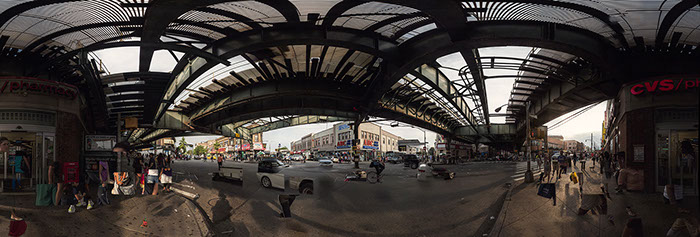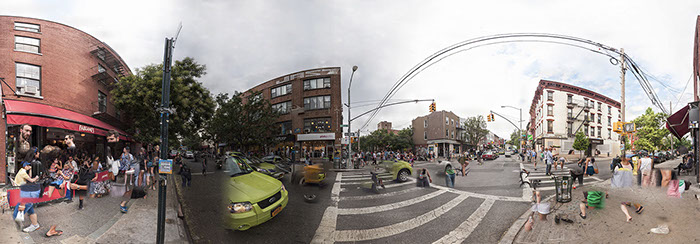Colonial Williamsburg Foundation Fellowship in 3D Visualization
Brian Emery, Associate Professor of Photography.
Fashion Institute of Technology, State University of New York.
A John D. Rockefeller Jr. Library Fellow’s Forum
4:00 p.m., Tuesday, June 21, 2016
Rockefeller Library, room 225
Previous Work:
Multiple Images and the Panorama
Panorama- To View All
Late 18th century word derived from the English "pan" meaning "all" and the Greek "horama" meaning view.
Most often, panoramic photography is created by stitching together multiple images. Traditionally this is done with a single row of photographs to simulate the act of swiveling one's head.
By breaking out of the single row method, the camera can be freed to better represent the act of "looking around". These images are created using a 35mm handheld camera, photographing between 30-150 frames per image over the course of about an hour.
The "placescape" is composed from many individual frames, recombined to create a continuous image of the time spent in-place.
This new reality is a collage of time; many fragmented moments pulled from their chronology and blended into a unified story of the place.
The resulting image becomes an intermediary- an object acting as a stand-in for the place I was experiencing, allowing the viewer to have an interactive experience simulating my time "looking around".
Technological Ways of Seeing
The predominant media/technology a culture uses to represent itself, affects the way that culture sees. Inversely, the way a culture sees
(and sees itself) affects the media/technology that culture uses to represent itself. Picturemaking utilizing multiple images is the predominant technological way of seeing in our culture.

NASA Curiosity Mars Rover Panorama, 2015
Gigapan

The Gigapan is a programmable robotic device for consumer cameras that creates panoramic images from 1000+ captures.
EyeTour
Field Recordings
3D Scanning
The logical next step- using a 3D scanning device to capture tens of thousands of images to define a space or object in a 3D mesh.
Perhaps scanning is a more accurate metaphor for our experience than the single photograph. As we move through space we are constantly scanning the world around us (this probably comes from our ancestral roots? Hunting and avoiding predators, gathering edibles and survival tools in the environment?).
When we "investigate" something we move around the thing looking at it from all angles and perspectives- inside, outside, on top of, all around etc.
Ancient Space
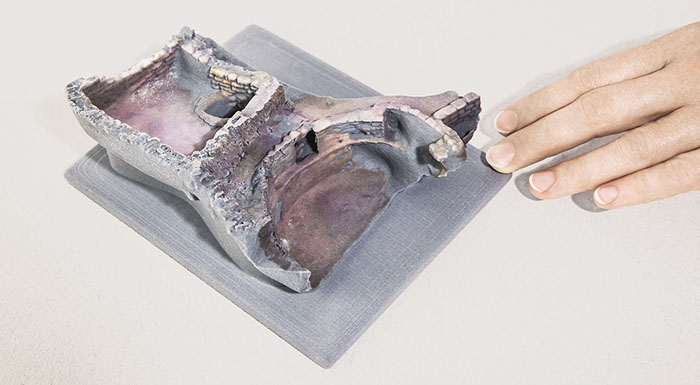
Farview Passageway. Mesa Verde, CO. 2015.
3D printed photograph.
Gypsum, pigment and cyanoacrylate.
Size variable.
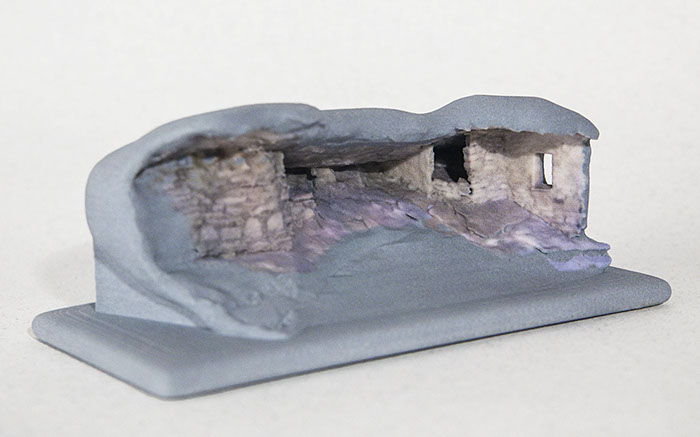
Firehouse Dwelling. Mule Canyon, UT. 2015.
3D printed photograph.
Gypsum, pigment and cyanoacrylate.
Size variable.
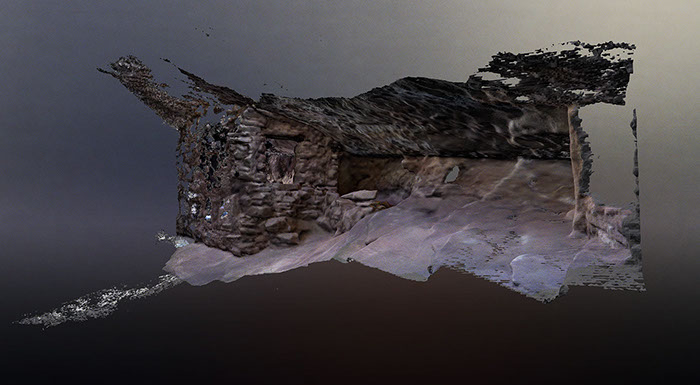
Firehouse Dwelling. Mule Canyon, UT. 2015.
Pigment print.
Size variable.
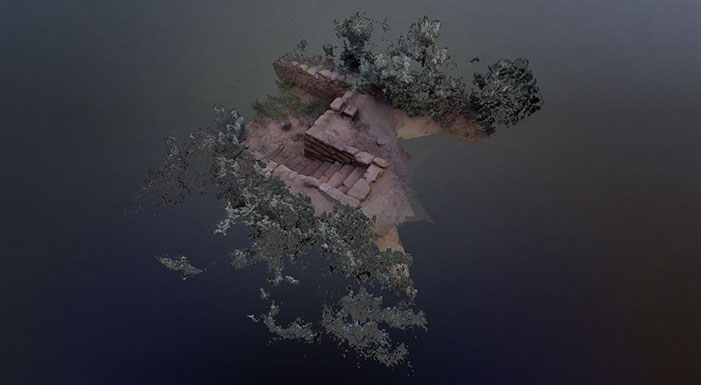
Farview House, Stair. Mesa Verde, CO. 2015.
Pigment print.
Size variable.
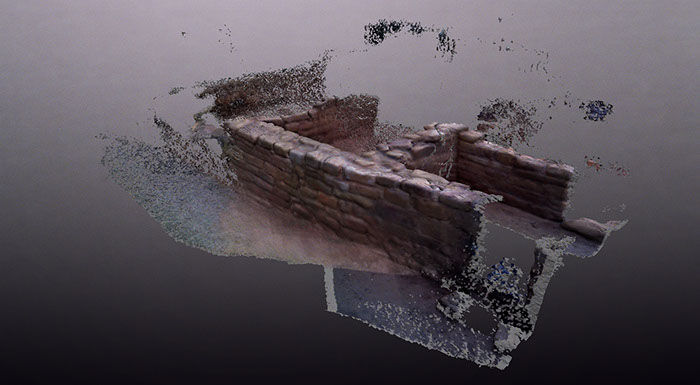
Farview House. Mesa Verde, CO. 2015.
Pigment print.
Size variable.
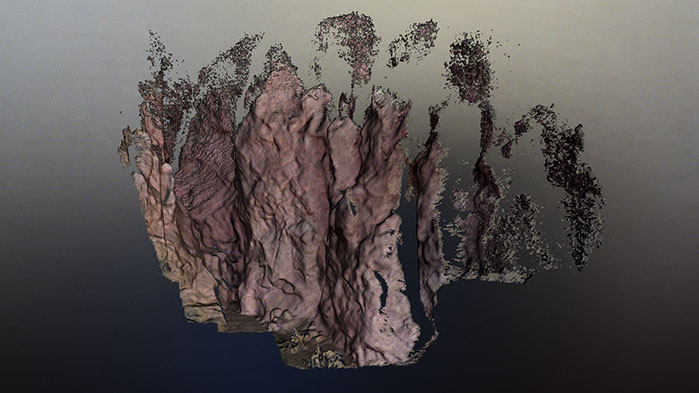
Rock Spring. Embudo, NM. 2015.
Pigment print.
Size variable.
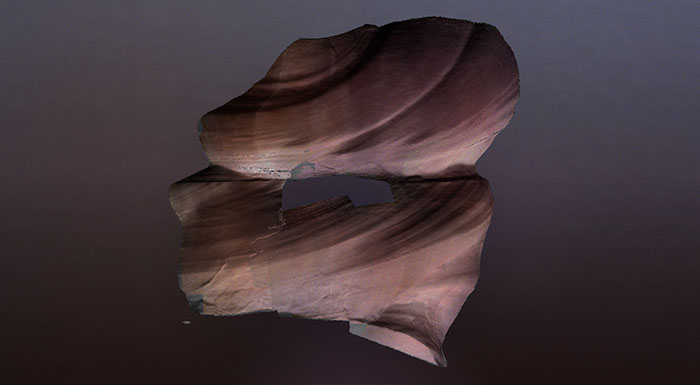
Antelope Canyon. Navajo Nation, AZ. 2015.
Pigment print.
Size variable.
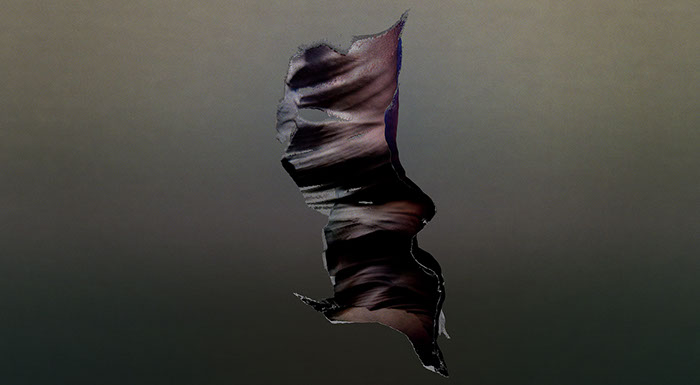
Antelope Canyon. Navajo Nation, AZ. 2015.
Pigment print.
Size variable.

Antelope Canyon. Navajo Nation, AZ. 2015.
Pigment print.
Size variable.
CWF Project:
Robert Carter House Attic




Carter House Attic- Camera Animation
2016
Carter House Attic- Fusion Animation
2016

What is the Story that Needs to be Experienced?
“We comfort ourselves by reliving memories of protection. Something closed must retain our memories, while leaving them their original value as images. Memories of the outside world will never have the same tonality as those of home and, by recalling these memories, we add to our store of dreams; we are never real historians, but always near poets, and our emotion is perhaps nothing but an expression of a poetry that was lost.”
― Gaston Bachelard, The Poetics of Space 1958









